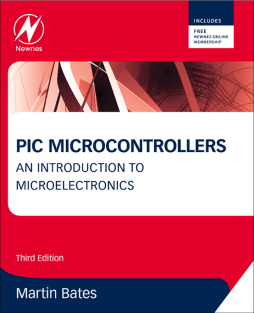
Additional Information
Book Details
Abstract
PIC Microcontrollers: An Introduction to Microelectronics, Third Edition, provides an introduction to the complex technology of microcontrollers. Starting with the standard PC, it establishes basic concepts and terminology: microprocessor systems, memory, input and output, and general digital systems ideas. It then examines the PIC microcontroller (MCU), which dominates the market for small-scale industrial applications. The analysis includes a chip that is no longer used commercially, with the minimum of advanced features: the PIC 16F84A; and the PIC 16F690, which has more features and is representative of more recent products in the PIC range. The discussions cover PIC architecture, programming techniques, PIC development systems, application design, program debugging, PIC motor applications, and microcontroller systems. Each chapter begins with an outline of contents and concludes with a set of questions for self-assessment or formal testing of students. This book was written for beginners, college or university students, or independent hobbyists.
- A focus on the 16F84A as the starting point for introducing the basic programming principles and architecture of the PIC, progressing to newer chips in the 16F range, in particular the 16F690, and Microchip starter kits
- How to use the free Microchip development environment MPLAB IDE, plus Proteus VSM interactive electronic design software, to develop your own applications
- Numerous fully-documented, working code examples downloadable from the companion website
"For undergraduate students and entry level hobbyists, this introductory volume on programming PIC microcontrollers provides practical instruction, as well as theoretical background information, in working with modern microelectronics. Beginning with an overview of terms and concepts, the work covers topics such as microcontroller architecture, application design, program debugging, PIC motor applications, and control systems. Chapters include illustrations, code examples, exercise questions and sample applications, and access to additional online resources is provided. This third edition is updated to account for advances in microcontroller technology and references both modern chips as well as the classic PIC16F84A. Author information is not provided." --Reference and Research News, October 2012
